Any aviation enthusiast planning a trip to Florida will likely consider a visit to Kissimmee Gateway Airport. The busy general aviation field close to Orlando has seen its fair share of comings and goings, most noticeably the loss of Tom Reilly’s Flying Tiger Warbird Restoration Museum which had opened back in 1985 but was forced to close after the attraction was destroyed by Hurricane Charley in 2004. This collection was later moved to Douglas, Georgia, however one other company has weathered the storms.
Stallion 51 was started by Lee Lauderback in 1987 and the company has since realised the dreams of thousands of lucky warbird fans, enabling them to take flight in its pair of North American TF-51D Mustangs. When visitors ask if they can ‘take a ride’ in the P-51, Lauderback often replies: “No, but you can take a test flight!”
However, the three dual-control fighters – N851D (c/n 124-44601) Crazy Horse and N351DT (c/n 122-41042) Crazy Horse ² and N51LW (c/n 122-41037) Little Witch – aren’t just for enthusiasts and thrill-seekers. Budding P-51 owners and pilots would be hard pushed to find a better facility for either converting onto the type or getting checked out by one of the company’s instructors.
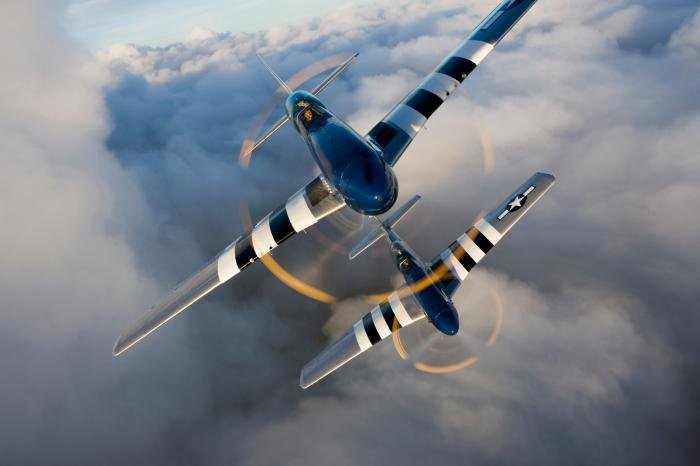
For those without the ambitions or budget to take flight in a Mustang, the attraction often receives visits from other warbirds, adding to the excitement of walking round Stallion 51’s hangars. Frequently, there are other P-51s and occasionally Supermarine Spitfires or Curtiss P-40 Warhawks.
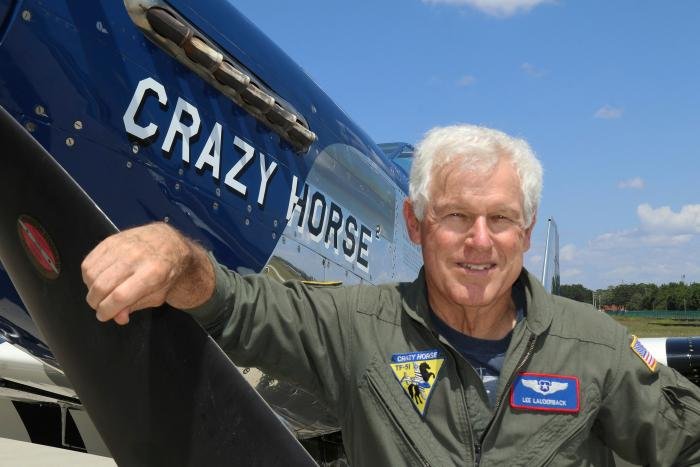
Starting out
Lauderback quips that a “moment of insanity” led him to founding Stallion 51. Aviation was in the blood as his father was a Consolidated PBY Catalina pilot in the US Navy and opportunities to fly came at a young age, briefly taking the controls of a North American Navion at just two years old. An interest in building aircraft models followed before flying gliders at 14. He would go solo in a Cessna 150 on his 16th birthday.
Lauderback’s passion for aviation continued to grow, with ambitions of flying a P-51 spurred on by Bob Hoover’s displays in his famous yellow Mustang. He yearned to become a fighter pilot but, despite his excellent proven flying skills, he knew his eyesight wasn’t good enough to meet the US military’s increasingly stringent standards – prompted by a glut of pilots recruited during the Vietnam War. Undeterred, he tried every military flying service available to him, but his vision prevented further evaluation.
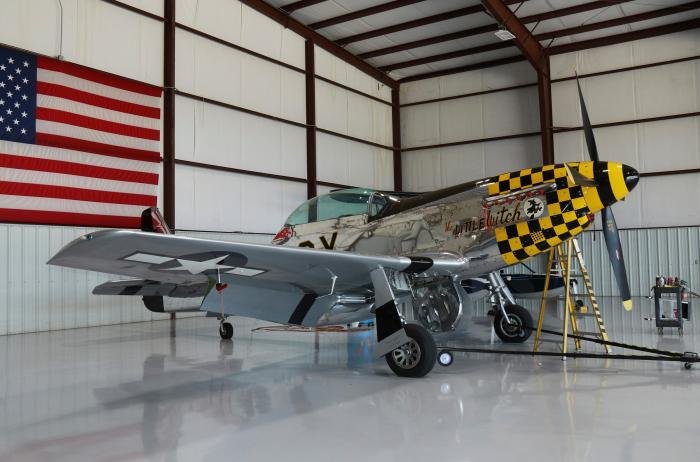
Not long out of college, Lauderback joined the golfer Arnold Palmer’s aviation department and stayed for 18 years, becoming chief pilot for The King’s Learjet 24, Cessna Citations and the MD500E helicopter, while two of his brothers, Peter and Richard, flew as Lockheed C-141 crew chiefs in the USAF. They were soon to retire, joining up with an acquaintance who owned two Warhawks and a P-51. This would be an introduction to the warbird scene for all three brothers, with Lauderback later getting a chance to take a ride in the backseat of a two-seat Mustang. He describes the trip as “a monumental moment in my life… I tried for many years after that to get Arnold Palmer to buy a P-51 but it never came to anything”.

In 1987, the US Navy Test Pilot School (USNTPS) at NAS Patuxent River, Maryland, had a requirement to provide qualitive evaluation flights. They wanted their students to experience something that wasn’t state of the art. The P-51 was the perfect aircraft for the job, and Lee and former business partner Doug Shultz got to work. Lauderback recalls: “We found a dual cockpit, dual control Mustang that met their requirements, told the bank we had a contract, told the military we had an aeroplane, and that was the start of Stallion 51.”
Over a few beers one evening, Lauderback and Doug began to think about the new operation and what to call it. When in the Navy, Doug’s callsign was ‘Stallion’ while ‘51’ was the natural number to use. The rest is history!
The first hangar was built in 1996 at Kissimmee and, three years later, the first Gathering of Mustangs event was held at the location with 65 examples of the type in attendance.

OV-10 Bronco
Having had the North American attachment, Lauderback’s desire to fly the OV-10 Bronco was always there. Cal Fire was seemingly the only civilian operator in the US in 2008, however a former German example, N614V (c/n 338-13), was acquired and shipped to Florida where Lee secured a contact with the US military to use it in a training role for some years. The engines are now life-expired, with Lauderback adding: “Finding replacements is a little difficult at the moment but we endeavour to replace them as soon as we can.”
Having qualified on the Mustang and many others, Lauderback became a US Federal Aviation Authority (FAA) Speciality Aircraft Examiner, enabling him to offer check rides to existing Mustang pilots and authorised experimental aircraft ratings to those new to the P-51. This isn’t just limited to the P-51. Lauderback also instructs on the Let L-39 as well as assisting with pilot training for contract close air support provider Blue Air Training, flying the OV-10 Bronco.
As well as the experience flights and training, there are several other aspects to the Stallion 51 group. These include AVMed 51, a separate, fully equipped facility where aviators can fly in and complete an FAA-approved medical examination, an aircraft sales and brokerage, Group 51 Sales, ran by Lauderback’s brother John, and Unusual Attitude Training which provides upset prevention and recovery training, made mandatory following the 2009 Air France flight 447 crash.
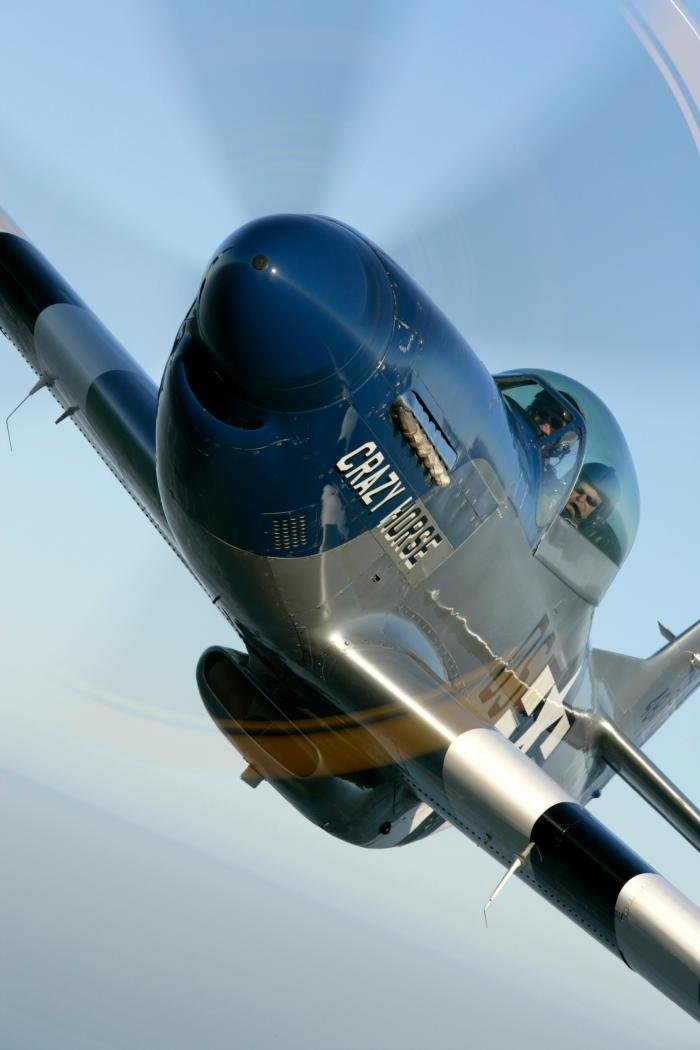
Display flying
As many US airshow afficionados can attest, Lauderback would often feature as part of the USAF Heritage Flight – serving for 18 years – while also flying for periods in the USNTPS the F-15, F-16, F/A-18 and having given check rides in the Lockheed F-104 Starfighter.
Reflecting on more than 30 years of Stallion 51, Lauderback says: “I smile each morning knowing my work is actually flying a P-51. How many people actually love their job like I do?" However, with any role, Lauderback has to take the rough with the smooth, and managing such an operation is no easy task, what with juggling experience flights, check out rides, training and airshow commitments. The Stallion 51 boss has found a different kind of flying as a means of relaxing – falconry. Lauderback is a Master class falconer and has two Harris hawks which he flies daily, even taking them to Texas to hunt quail or Idaho to catch pheasants.

Looking to the future, Lauderback believes that the current operation would be difficult to scale up and is currently in a very good position. He says: “I’m not in it for the money, I’m in it for the passion I have for the P-51 Mustang, and as I get older, I know I have a great team of people behind me, from fellow qualified Mustang and L-39 pilots to mechanics.”
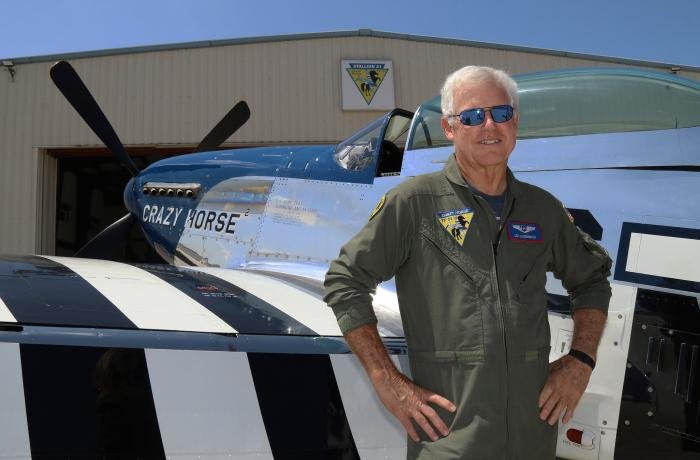
He continues: “I think this is the path forward, I just want to keep it fun and interesting... relaxing with my birds and flying sailplanes is my way of slowing things down a little for myself.”

